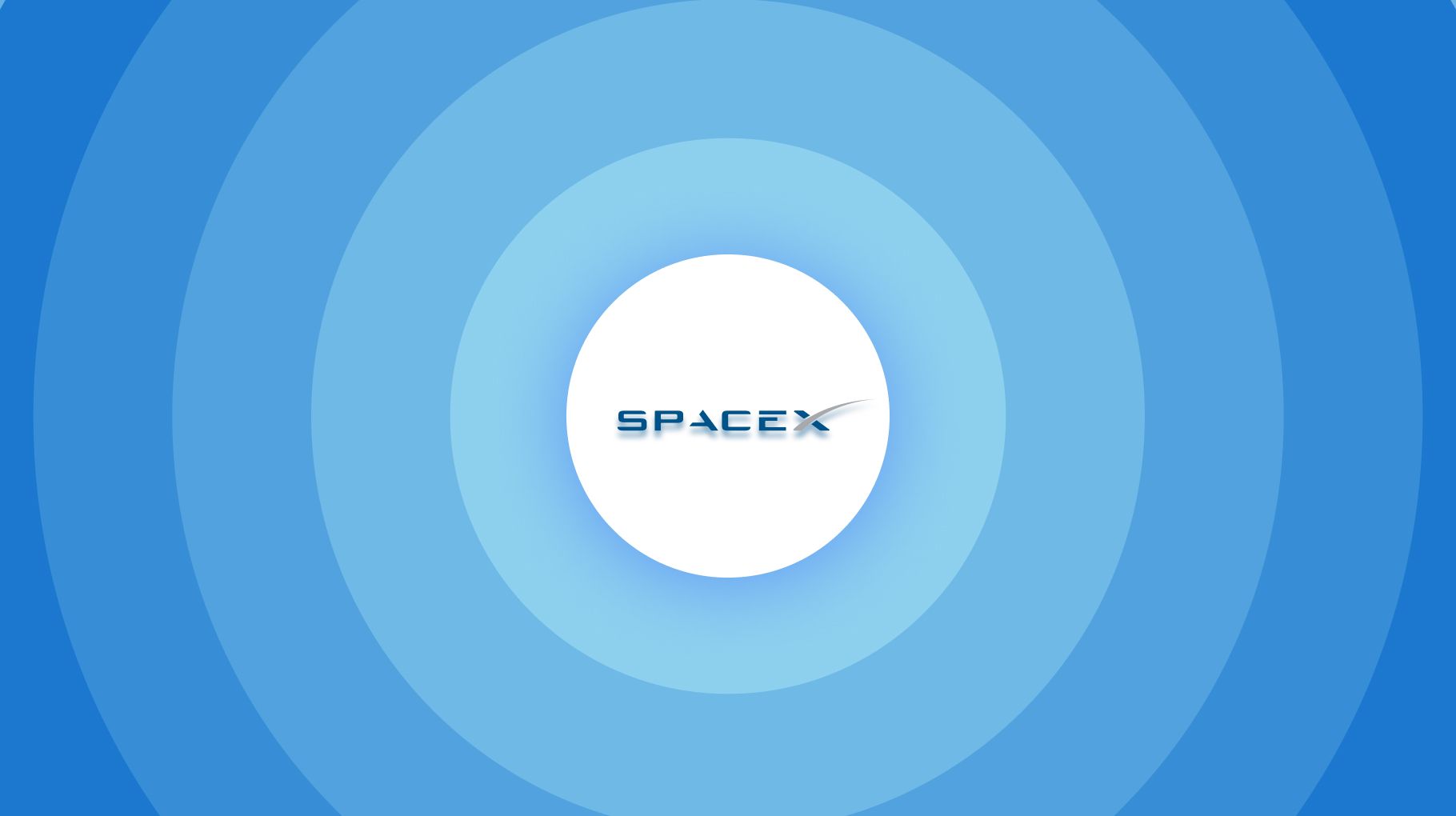SpaceX Launches and Growth Statistics 2024

SpaceX Interesting Key Facts
- In December 2015, Falcon 9 V1.2 Full Thrust, was the first launch vehicle on an orbital trajectory to successfully vertically land a first stage.
- On February 06, 2018, SpaceX launched a Tesla Roadster into Space.
- The Tesla Roadster that was launched into space by SpaceX was Elon Musk’s personal vehicle that he used to travel to work.
- In April 2018, SpaceX launched a large space telescope named TESS intended to wild search exoplanets transiting nearby stars.
- TESS was also the first launched scientific satellite by SpaceX.
- For the fourth flight of Falcon 1, SpaceX pulled in all their remaining resources for the possible last launch. Had the fourth flight of Falcon 1 failed, it was possible that SpaceX would have ceased to exist.
- On August 04 2022, photos of Tesla’s customers were launched into space by SpaceX.
- SpaceX was the first one to launch a commercial civilian space flight! This makes you wonder how space flights would take form in the coming years.
- As the first private company, SpaceX’s biggest achievement was to fly cargo to the International Space Station. Previously, only government agencies are only allowed to.
- Elon Musk, the CEO of Tesla, Inc and subsequently SpaceX, is the richest person in the world.
- Elon Musk founded and built SpaceX first before becoming the CEO of Tesla
- Elon Musk used the money he earned when eBay bought Paypal to fund SpaceX with $100 million.
- Elon Musk is not the founder of Tesla. He invested $6.5 million in a round of investment in February 2004 and became one of the major shareholders of the company.
Source: NBC News, CNN, NASA, Universe Today, SpaceX, NBC News, Bloomberg
SpaceX: Company Overview (About)
SpaceX is a private company within the space/communications industry that was founded on March 14th 2002 by Elon Musk in California, USA.
At a glance:
source: Forbes 1, Forbes 2, SpaceX
SpaceX Revenue
- 2018: ~$2 billion estimated revenue based on rocket launches
- 2020:~$1.2 billion estimated revenue based on rocket launches
- 2022: ~$3.2 billion estimated revenue based on rocket launches and Starlink revenue

As you can see in the graph above, SpaceX’s revenue keeps on growing every year, and it does that significantly.
Source: CNBC, Payload Space, Finty
SpaceX Funding History
This is SpaceX’s funding history:

There have been a lot of previous investors in SpaceX, and there has also been a lot of money put into the company.
At the end of the day, SpaceX is one of the leading companies related to the space industry.
Source: Crunchbase
How much is SpaceX worth? (Valuation)
SpaceX Valuation throughout the years:
- January 2015: $12 billion
- December 2018: $30.5 billion
- May 2019: $33.3 billion
- March 2020: $36 billion
- August 2020: $46 billion
- February 2021: $74 billion
- October 2021: $100.3 billion
- May 2022: $127 billion
.jpg)
Source: Techcrunch,CNN, The Wall Street Journal, CNBC 1 ,CNBC 2, CNBC 3, Space News Observer
SpaceX Acquisitions
As of November 2022, SpaceX has only acquired one company so far:
- July 16, 2021: Swarm
Source: CNBC
SpaceX CEO’s net worth throughout the years
The following is Elon Musk’s net worth throughout the years:
- 2013: $2.7 billion is Elon Musk’s net worth
- 2014: $8.4 billion is Elon Musk’s net worth
- 2015: $12 billion is Elon Musk’s net worth
- 2016: $10.7 billion is Elon Musk’s net worth
- 2017: $13.9 billion is Elon Musk’s net worth
- 2018: $19.9 billion is Elon Musk’s net worth
- 2019: $22.3 billion is Elon Musk’s net worth
- 2020: $24.6 billion is Elon Musk’s net worth
- 2021: $151 billion is Elon Musk’s net worth
- 2022: $219 billion is Elon Musk’s net worth

Source: Forbes
How many employees does SpaceX have?
This is the list of the number of employees throughout the years:
- November 2005: 160 employees
- April 2016: 4,000 employees
- April 2018: 5,000 employees
- January 2019: 6,000 employees
- June 2020: 8,000 employees
- March 2021: 9,500 employees
- April 2022: 12,000 employees

Sources: LA Times, Avation Week, TED, CNBC, Business Insider, Space News
SpaceX Employee Demographics by Ethnicity
The following is the data on SpaceX employee demographics by ethnicity as of 2021:
- White: 49.8%
- Hispanic or Latino: 25.6%
- Asian: 10.8%
- Black or African American: 8.5%
- Others: 5.2%

Source: Zippia
SpaceX Most Common Locations (by job count)
The following is the data on SpaceX’s most common locations based on the job count:
.jpg)
Source: Zippia
SpaceX Employee Gender Distribution
The following is the data on SpaceX gender distribution as of 2021:
- Male: 86.3%
- Female: 13.7%

Source: Zippia
What are the rocket engines that SpaceX used throughout the years?
SpaceX has developed four family of engines:
- 2003-2013: Merlin Engines were used by SpaceX
- 2006-2009: Kestrel Engines were used by SpaceX
- 2010-2012: Draco Engines were used by SpaceX
- 2012-present: SuperDraco Engines are being used by SpaceX
SpaceX also noted that:
- since 2016: Raptor engines are currently being developed
- as of 2020: a new line of methox thrusters
Sources: SpaceX 1, Space Flight, SpaceX 2, Astronautix
SpaceX Types of Launch Vehicles (Rockets)
SpaceX is massively known for it’s rocket launches. Throughout the years, since it was founded on 2002, SpaceX has been developing their own launch vehicles with 80% of the parts being manufactured on SpaceX own factory floors. So far, SpaceX has developed three launch vehicles:
- Falcon 1: The small lift launch vehicle of SpaceX
- Falcon 9: The medium lift launch vehicle of SpaceX
- Falcon Heavy: The heavy-lift launch vehicle of SpaceX
Sources: Time, Satellite Today, SpaceX, Britannica, TechCrunch
SpaceX Launch Vehicles Overview
The following table is an overview of SpaceX launch vehicles as of November 2022:
Souces: Time, Satellite Today, SpaceX, Britannica, TechCrunch
SpaceX Falcon 1 (Overview)
Falcon 1 was a small-lift vehicle developed by SpaceX and was operated from 2006 to 2009.
On September 28, 2008, it became the very first fully liquid-fueled launch vehicle to go into orbit around the earth that is privately developed.
It is a two-stage-to-orbit rocket that used a single Merlin Engine for its first stage and Kestrel Engine for its second stage.
The following table shows the overview of key stat and info of SpaceX Falcon 1:
Sources: NASA, Next Big Future, Astronautix
SpaceX: What was Falcon 1’s Size?
The following table shows Falcon 1’s size: Height, Diameter, Mass
Source: David Darling
SpaceX : What was SpaceX Falcon 1’s Payload Capacity?
The following list shows Falcon 1’s payload capacity:
- 180 kg (400 lb): Payload to Low Earth Orbit (LEO)
- 200 kg (440 lb): Payload to Sun-synchronous Orbit (SSO)
SpaceX also noted that:
- 670 kg (1,480 lb) was the originally proposed payload capacity
Sources: Geo Ring Biz
SpaceX: What was SpaceX’s quotation of Falcon 1 launch pricing as advertised throughout the years?
The following list is for SpaceX quotation of Falcon 1’s pricing as advertised :
- 2005: $5.9 million was the advertised cost of Falcon 1
- 2007: $6.7 million was the advertised cost of Falcon 1
- 2009: $7 million was the advertised cost of Falcon 1
Sources: Space, SpaceX, Astraonautix
SpaceX Falcon 1 Launching History
Falcon 1 had made 5 launches from 2006 to 2009. The following lists shows the number of failed and successful attempts:
- Number of Successful Launches: 2
- Number of Failed Launches: 3
Source: Space 1, Space 2, Space 3, Space 4, Nasa Watch, Space Flight Now 1, Space Flight Now 2, New York Times
SpaceX Falcon 1 Launching History ( Failed Attempts)
The following table shows SpaceX Falcon 1’s failed launches:
Source: Space 1, Space 2, Space 3, Space 4, Nasa Watch, Space Flight Now 1, Space Flight Now 2, New York Times
SpaceX Falcon 1 Launching History ( Successful Attempts)
The following table shows SpaceX Falcon 1’s successful launches:
The following table shows SpaceX Falcon 1’s successful launches:
Source: Space 1, Space 2, Space 3, Space 4, Nasa Watch, Space Flight Now 1, Space Flight Now 2, New York Times
SpaceX Falcon 9 (Overview)
Falcon 9 is a partially reusable medium lift launch vehicle that is used to carry cargo and crea into Earth orbit. Falcon 9 has two stages.
The rocket has evolved through several versions: Falcon V1.0, Falcon V1.1, Falcon V1.2 Full Thrust, and Falcon 9 Block 5.
The following table shows the overview of key stat and info of SpaceX Falcon 9:
Source: SpaceX
What are the different versions of Falcon 9 throughout the years?
The following are the different versions of Falcon 9 throughout the years as of November 2022:
- 2010-2013: Falcon 9 V1.0
- 2013-2016: Falcon 9 V1.1
- 2015-Present: Falcon 9 V1.2 Full Thrust
- 2018-Present: Falcon 9 Block 5 Full Thrust Variant
Sources: NASA 1, NASA 2, NASA 3, Ars Technica
SpaceX: Falcon 9 V1.0 (Overview)
At a glance:
Source: NASA
SpaceX: What was Falcon 9 Version 1.0’s Size?
The following table shows Falcon 1’s size: Height, Diameter, Mass
Source: NASA
SpaceX: How much money did it cost to make Falcon 9 v1.0?
Unlike it’s predecessor Falcon 1, the development of Falcon 9 was accelerated through the NASA purchasing several demonstration flights.
- 2006: $300 million through seed money
Source: NASA
SpaceX: What is the commercial launch price of SpaceX Falcon 9 v1.0?
- 2010: $54 million -$59.5 million was the commercial launch price of SpaceX Falcon 9 V1.0.
Source: SpaceX
SpaceX : What was SpaceX Falcon 9 Version 1.0’s Payload Capacity?
The following list shows Falcon 1’s payload capacity:
- 9,000 kg (20,000 lb): Payload to Low Earth Orbit (LEO)
- 3,400 kg (7,500 lb): Payload to Geosynchronous Transfer Orbit (GTO)
Souce: NASA
SpaceX Falcon 9 Version 1.0 Launching History throughout the years (2010)
The following data represents SpaceX Falcon 9 Version 1.0 Launching History in 2010:
Sources: Space Flight Now, News Science
SpaceX Falcon 9 Version 1.0 Launching History throughout the years (2012 to 2013)
The following data represents SpaceX Falcon 9 Version 1.0 Launching History in 2012 to 2013:
Sources: BBC, Space Flight Now
SpaceX: Falcon 9 Version 1.1 (Overview)
At a glance:
SpaceX: How much money did it cost to make Falcon 9 v1.1?
Unfortunately, the cost to make SpaceX Falcon 9 V1.1 is undisclosed, read the rest of the stat more for more information.
Source: NASA
SpaceX: What is the commercial launch price of SpaceX Falcon 9 v1.1?
- October 2013: $56.5 million was the commercial launch price of SpaceX Falcon 9 v1.1.
- October 2015: $61.2 million was the commercial launch price of SpaceX Falcon 9 v1.1.
Source: SpaceX
SpaceX : What was SpaceX Falcon 9 V1.1’s Payload Capacity?
The following list shows SpaceX Falcon 9 V1.1’s payload capacity:
- 13,150 kg (28,990 lb): Payload to Low Earth Orbit (LEO)
- 4,850 kg (10,690 lb): Payload to Geosynchronous Transfer Orbit (GTO)
Souce: NASA
SpaceX Falcon 9 V1.1 Launching History throughout the years (2013)
The following data represents SpaceX Falcon 9 V1.1 Launching History in 2013:
Sources: Parabolic Arc, SpaceX
SpaceX Falcon 9 V1.1 Launching History throughout the years (2014)
SpaceX became the second most prolific American company in terms of 2014 launches with six launches.
The following data represents SpaceX Falcon 9 V1.1 Launching History in 2014:
Sources: NASA Space Flight, Space Flight Now, Space News, NASA 1, NASA 2, SpaceX, AsiaSat, NASA
SpaceX Falcon 9 V1.1 Launching History throughout the years (2015)
The following data shows SpaceX Falcon 9 V.1 launching history in 2015:
Sources: NASA, NOAA, Space Flight Now, Space Force
SpaceX Falcon 9 V1.1 Launching History throughout the years (2016)
Following the development and creation of the F9 FT, SpaceX Falcon 9 V1.1 has only one launching in 2016. The following data shows SpaceX Falcon 9 V.1 launching history in 2016:
Source: Space Flight Now
SpaceX: Falcon 9 V1.2 Full Thrust (Overview)
Falcon 9 V1.2 Full Thrust is a partially reusable orbital medium-lift launch vechile. It was the first launch vehicle on an orbital trajectory t o successfully vertically land a first stage.
Below are the Key Stat and Info
SpaceX: What was Falcon 9 Version 1.2 Full Thrust’s Size?
The following table shows Falcon 9 V1.2 Full Thrust’s size: Height, Diameter, Mass
Source: NASA
SpaceX: How much money did it cost to make Falcon 9 V1.2 Full Thrust?
Unfortunately, the cost to make SpaceX Falcon 9 V1.2 Full Thrust is undisclosed, read the rest of the stat more for more information.
Source: NASA
SpaceX: What is the commercial launch price of Falcon 9 V1.2 Full Thrust?
- March 2016: $62 million was the commercial launch price of SpaceX Falcon 9 v1.2 Thrust.
Also, SpaceX noted that in,
- January 2018: $50 million was the price to reuse SpaceX Falcon 9 v1.2 Thrust.
SpaceX : What was SpaceX Falcon 9 V1.2 Full Thrust’s Payload Capacity (LEO)?
The following list shows SpaceX Falcon 9 V1.2 Full Thrust’s payload capacity to LEO:
- 22,800 kg (50,300 lb): Expendable, payload to Low Earth Orbit (LEO)
- 16,250 kg (35,830 lb): When landing, payload to Low Earth Orbit (LEO)
- 10,886 kg (24,000 lb): PAF Structural limit, payload to Low Earth Orbit (LEO)
Souce: SpaceX, Space Flight Insider
SpaceX : What was SpaceX Falcon 9 V1.2 Full Thrust’s Payload Capacity (GTO)?
The following list shows SpaceX Falcon 9 V1.2 Full Thrust’s payload capacity to GTO:
- 8,300 kg (18,300 lb): Expendable, payload to Low Earth Orbit (GTO)
- 5,500 kg (12,100 lb): Reusable, payload to Low Earth Orbit (GTO
Souce: SpaceX
SpaceX Falcon 9 V1.2 Full Thrust Launching History throughout the years (2016)
The following data shows SpaceX Falcon 9 V1.2 Full Thrust (F9 FT) launching history in 2016:
Sources: Space, Space Flight
SpaceX Falcon 9 V1.2 Full Thrust Launching History throughout the years (2017)
The following data shows SpaceX Falcon 9 V1.2 Full Thrust (F9 FT) launching history in 2017:
Sources: Space Flight Now 1, Space Flight Now 2, Space Flight Now 3, NASA
SpaceX Falcon 9 V1.2 Full Thrust Launching History throughout the years (2018)
The following data shows SpaceX Falcon 9 V1.2 Full Thrust (F9 FT) launching history in 2018:
Sources: The Verge, SpaceX, NASA 1, Space Flight Now, Space Flight Insider, Florida Today
SpaceX Falcon 9 Full Thrust Block 5 Overview
Flacon 9 Block 5 is partially reusable two-stage-to-orbit medium-lift launch vehicle. This is the fifth version of Falcon 9 Full Thrust powered by the Merlin engines burning rocket-grade kerosine (RP-1) and liquid oxygen (LOX).
Below are the Key Stat and Info
SpaceX: What was Falcon 9 Full Thrust Block 5 Size?
The following table shows Falcon 1’s size: Height, Diameter, Mass
Source: NASA
SpaceX: How much money did it cost to make Falcon 9 Full Thrust Block 5?
Unfortunately, the cost to make SpaceX Falcon 9 Full Thrust Block 5 is undisclosed, read the rest of the stat more for more information.
Source: NASA
SpaceX: What is the commercial launch price of Falcon 9 Full Thrust Block 5?
- March 2016: $62 million was the commercial launch price of SpaceX Falcon 9 Full Thrust Block 5.
Also, SpaceX noted that in,
- January 2018: $50 million was the price to reuse SpaceX Falcon 9 Full Thrust Block 5.
SpaceX : What is SpaceX Falcon 9 Full Thrust Block 5 Payload Capacity (LEO)?
The following list shows SpaceX Full Thrust Block 5 payload capacity:
- 22.8 tons (50,000 lb): Payload to Low Earth Orbit (LEO)
- 16.70 tons (36,800 lb): Payload to Geosynchronous Transfer Orbit (GTO)
Source: SpaceX
SpaceX Falcon 9 Full Thrust Block 5 Launching History throughout the years (2018)
The following data shows SpaceX Falcon 9 Full Thrust Block 5 launching history in 2018:
Sources: NASA 1, NASA 2, Space Flight Now, SpaceX, Space News
SpaceX Falcon 9 Full Thrust Block 5 Launching History throughout the years (2019)
The following data shows SpaceX Falcon 9 Full Thrust Block 5 launching history in 2019:
Sources: NASA 1, NASA 2, NASA 3, BBC, Space
SpaceX Falcon 9 Full Thrust Block 5 Launching History throughout the years (2020)
In addition to 14 or 15 non starlink launches, Gwynne Shotwell stated in 2019 that SpaceX was looking forward to as many as 24 launches for Starlink satellites in 2020.
The following data shows SpaceX Falcon 9 Full Thrust Block 5 launching history in 2020:
Source: Space News, Space 1, Space 2, Space Flight Now 1, Space Flight Now 2, Space Flight Now 3, Space Flight Now 4, NASA 1, NASA 2, NASA 3
SpaceX Falcon 9 Full Thrust Block 5 Launching History throughout the years (2021)
In October 2021, Elon Musk indicated that he was planning to increase launches to 48 in 2021. Space X Falcon 9 Full Thrust Block 5 version had a total of 31 launches in 2021.
The following data shows SpaceX Falcon 9 Full Thrust Block 5 launching history in 2021:
Source: TeslaRati, Space Flight Now, NASA 1, NASA 2, NASA 3, NASA 4, NASA 5, NASA 6, NASA 7, NASA 8, NASA 9, NASA 10, NASA 11
SpaceX Falcon 9 Full Thrust Block 5 Launching History throughout the years (2022)
The following data shows SpaceX Falcon 9 Full Thrust Block 5 launching history in 2021:
Source: Space Flight Now 1, Space Flight Now 2, Space Flight Now 3, Teslarati, SpaceX, Every Astronaut, NASA 1, NASA 2, NASA 3, NASA 4, NASA 5, NASA 6, NASA 7, NASA 8, NASA 9, NASA 11, NASA 12, NASA 13, NASA 14, NASA 15, Space News, Next Space Flight 1, Next Space Flight 2, Next Space Flight 3, Next Space Flight 4
SpaceX Falcon Heavy Overview
Falcon Heavy is a partially reusable heavy-lift launch vehicle that is produced by SpaceX, an American aerospace manufacturer. The rocket consists of two strap-on boosters made from Falcon 9 first stages, a center core also made from a Falcon 9 first stage, and a second stage on top.
Below are the Key Stat and Info
Sources: SpaceX
SpaceX: What was Falcon Heavy Size?
The following table shows Falcon Heavy size: Height, Diameter, Mass
Source: SpaceX
SpaceX: How much money did it cost to make Falcon Heavy?
Unfortunately, the cost to make SpaceX Falcon Heavy is undisclosed, read the rest of the stat more for more information.
Source: CNBC
SpaceX: What is the commercial launch price of Falcon Heavy?
- 2017: US$97 million for reusable was the commercial launch price of SpaceX Falcon 9 v1.2 Thrust.
- 2022: US$150 million for expendable was the price to reuse SpaceX Falcon 9 v1.2 Thrust.
SpaceX : What is SpaceX Falcon Heavy Payload Capacity?
The following list shows Falcon 1’s payload capacity:
- 63.8 tons (141,000 lb): Payload to Low Earth Orbit (LEO)
- 26.7 tons (59,000 lb): Payload to Geosynchronous Transfer Orbit (GTO)
- 16.8 tons (37,000 lb): Payload to Mars Transfer Orbit (MTO)
- 3.5 tons (7,700 lb): Payload to Pluto
Source: SpaceX
SpaceX Falcon Heavy Launching History
Overview of the total launches
The success rate is determined by the overall landing attempt. SpaceX Falcon has one core and two landing boosters. SpaceX Falcon Heavy had 4 launches and throughout the years as of November 2022:
Sources: NASA 1, Twitter, NASA 2, Next Space Flight
SpaceX Falcon Heavy Price Per Launch
Sources: Space News, The Planetary Society, Gov Con Wire, Next Space Flight
Who are SpaceX’s top 3 customers based on the number of launches (As of November 2022)?
SpaceX has a total of 65 launches in their own name. These missions often carried Starlink satelites into space and scientific instruments as part of their Exploration Program. As of 2022, SpaceX’s top customer is still NASA with 42 contracted launches so far. SpaceX has contracted with an estimated 60 distinctive customers throughout the years. Let’s have closer look with the data below.
(The following table of data shows who the top 3 customers of SpaceX are based on the number of launches)
Sources: NASA Space Flight, Space Flight Now, Space Flight Now 2, Space Flight Now 3 Space News, NASA 1, NASA 2, SpaceX, AsiaSat, Space 1, Space 2, Space 3, Space 4, Nasa Watch, New York Times
Full list of SpaceX customers based on the number of launches (2022)
.jpg)
Sources: NASA Space Flight, Space Flight Now, Space Flight Now 2, Space Flight Now 3 Space News, NASA 1, NASA 2, SpaceX, AsiaSat, Space 1, Space 2, Space 3, Space 4, Nasa Watch, New York Times
How many SpaceX launches are there per year (2010-2022)?
The following data shows the number of SpaceX Launches per year:
.jpg)
Sources: SpaceX Blog 1, SpaceX Blog 2, SpaceX Blog 3, SpaceX Blog 4 (to be added)
Total Number of SpaceX Launches per Launch Vehicle Family
- 5 Launches: SpaceX Falcon 1
- 184 Launches: SpaceX Falcon 9 launch vehicle family
- 33 Launches: SpaceX Dragon, Attached to Falcon 9 Rockets
- 4 Launches: SpaceX Falcon Heavy
- Starship: still in development

Souces: SpaceX 1, SpaceX 2, SpaceX 3, SpaceX 4
Total Number of SpaceX Landings per Launch Vehicle Family
- 143 Total Landings: SpaceX Falcon 9 launch vehicle family
- 9 Total Landings: SpaceX Falcon Heavy
Total Number of Reflights per Launch Vehicle Family
- 122 reflights: SpaceX Falcon 9 launch vehicle family
- 4 reflights: SpaceX Falcon Heavy launch vehicle family
SpaceX also noted that:
- 33 visits to ISS: SpaceX Dragon
- 15 reflown missions: SpaceX Dragon
Sources: SpaceX 1, SpaceX 2, SpaceX 3
How Many SpaceX Dragon Capsules Are There?
There are two types of SpaceX dragon capsules.
- SpaceX Dragon 1
- SpaceX Dragon 2
How many variations of SpaceX Dragon 2 are there?
There are two variations of SpaceX dragon capsules.
- Crew Dragon
- Cargo Dragon
Source: Space Flight Now
SpaceX Dragon 1 Overview
Source: Space, Britannica
SpaceX Dragon 2 Overview
Sources: SpaceX, Space Flight Now
SpaceX Starship (Overview)
SpaceX Starship is a fully-reusable, super-heavy-lift launch vehicle that is currently being under development by Spacex. Below are the key stat and info:
Source: BBC
How many launch facilities does SpaceX have?
As of 2020, SpaceX have four launch facilities:
- SLC-40: Cape Canaveral Space Launch Complex 40
- SLC-4E: Vandenberg Space Force Base Space Launch Complex 4E
- LC-39A: Kennedy Space Center Launch Complex 39A
- STLS: South Texas Launch Site
Sources: Space Report
SpaceX Starlink Overview
At a glance:
Sources: The Verge, Tech Times, Planet 4859
Where is SpaceX Starlink Internet Service Available (which countries)?
The following is the table list of the countries where SpaceX Starlink Internet Service is available based on debut date:
Sources: Starlink, CNBC 1, Space, iPhone in Canada, CNBC 2, Tesla Rati, Tesmanian, Reddit 1, Reddit 2, Reddit 3, Reddit 4, Reddit 5, Reddit 6, pplware, HD Blog It, Reddit 7, Tesmanian 2, Telecom Paper, LRT, Tesmanian 3, Reuters, Canal Tech, News BG, Mobilissimo, Tesmanian 4, Reddit 8, Tesmanian 5, SpaceX Twitter 1, SpaceX Twitter 2, SpaceX Twitter 3, The Gleaner
SpaceX.com Website Traffic Analysis
These are the data collected on SpaceX.com’s Website Traffic Analysis as of November 2022:
SpaceX.com Traffic Summary
Source: hypestat
SpaceX.com Website Traffic Sources
- Direct sources: 59.27% of the traffic
- Referral sources: 8.01% of the traffic
- Search sources: 25.58% of the traffic
- Social sources: 7.15% of the traffic
- Paid sources: 0.02% of the traffic

Source: hypestat
SpaceX.com Traffic Source: Desktop vs Mobile
- 59.32% of the users visit the website through desktop devices
- 40.68% of the users visit the website through mobile devices

Source: hypestat








